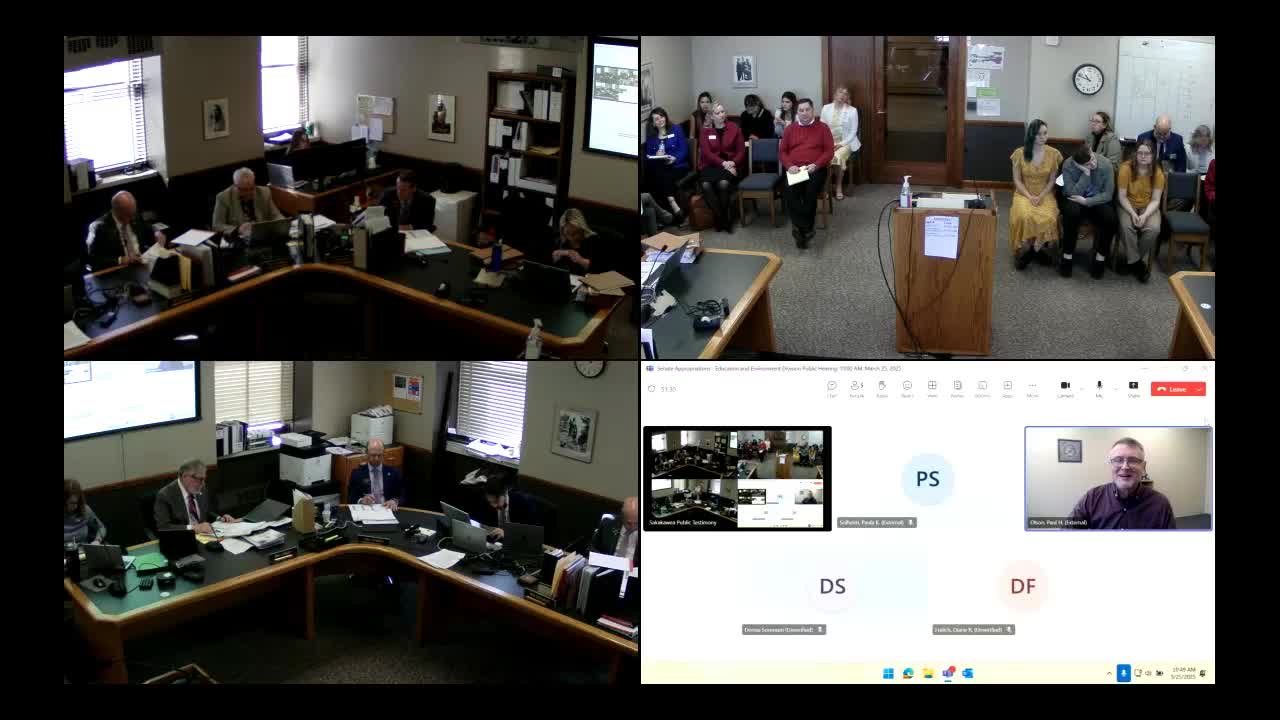North Dakota staff advocate for improved assistive technology services for visually impaired
March 25, 2025 | Appropriations - Education and Environment Division, Senate, Legislative, North Dakota
This article was created by AI summarizing key points discussed. AI makes mistakes, so for full details and context, please refer to the video of the full meeting. Please report any errors so we can fix them. Report an error »

During a recent meeting of the Senate Appropriations - Education and Environment Division, significant discussions emerged regarding the challenges faced by educational services for individuals with visual impairments in North Dakota. The meeting highlighted the need for enhanced support and resources to better serve both children and adults with visual disabilities.
A long-serving educator, who has dedicated over 30 years to the field, emphasized the importance of efficiency in staffing while acknowledging the growing demands on their services. Currently, the organization serves 269 children and 190 adults, providing essential skills and support tailored to individuals with visual impairments. The educator stressed the goal of helping these individuals explore sustainable career options, reinforcing the belief that all students should have high expectations for their futures.
A critical point raised was the role of technology in supporting individuals with visual impairments. While advancements in technology, such as smartphones and computers, offer potential benefits, barriers still exist that limit accessibility. The educator noted that their team, though skilled, is stretched thin and only manages to conduct a limited number of comprehensive evaluations each year. This lack of capacity means that many individuals do not receive the thorough assessments necessary to identify the best assistive technologies for their needs.
The educator's experience as a past president of the Council of Schools for the Blind provided valuable context, revealing that North Dakota's services may lag behind those offered in other states. This comparison underscores the urgency for increased resources and support to enhance the quality of services provided to individuals with visual impairments across the state.
In conclusion, the discussions at the Senate Appropriations meeting highlighted a pressing need for improved educational services and resources for individuals with visual impairments in North Dakota. As the state seeks to address these challenges, the focus will likely remain on enhancing technology access and expanding the capacity of support services to ensure that all individuals can achieve their full potential.
A long-serving educator, who has dedicated over 30 years to the field, emphasized the importance of efficiency in staffing while acknowledging the growing demands on their services. Currently, the organization serves 269 children and 190 adults, providing essential skills and support tailored to individuals with visual impairments. The educator stressed the goal of helping these individuals explore sustainable career options, reinforcing the belief that all students should have high expectations for their futures.
A critical point raised was the role of technology in supporting individuals with visual impairments. While advancements in technology, such as smartphones and computers, offer potential benefits, barriers still exist that limit accessibility. The educator noted that their team, though skilled, is stretched thin and only manages to conduct a limited number of comprehensive evaluations each year. This lack of capacity means that many individuals do not receive the thorough assessments necessary to identify the best assistive technologies for their needs.
The educator's experience as a past president of the Council of Schools for the Blind provided valuable context, revealing that North Dakota's services may lag behind those offered in other states. This comparison underscores the urgency for increased resources and support to enhance the quality of services provided to individuals with visual impairments across the state.
In conclusion, the discussions at the Senate Appropriations meeting highlighted a pressing need for improved educational services and resources for individuals with visual impairments in North Dakota. As the state seeks to address these challenges, the focus will likely remain on enhancing technology access and expanding the capacity of support services to ensure that all individuals can achieve their full potential.
View full meeting
This article is based on a recent meeting—watch the full video and explore the complete transcript for deeper insights into the discussion.
View full meeting
